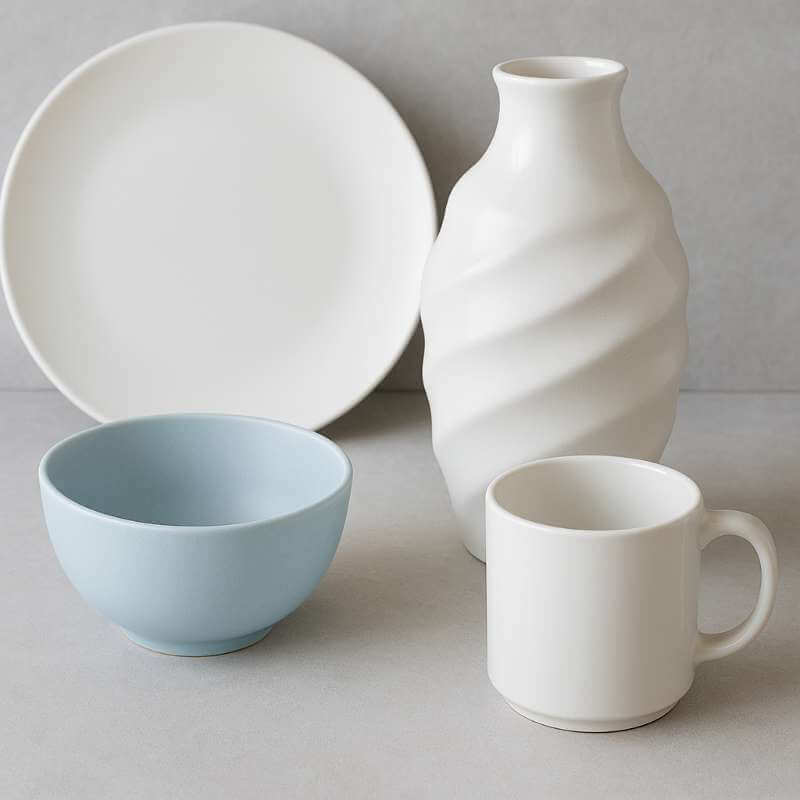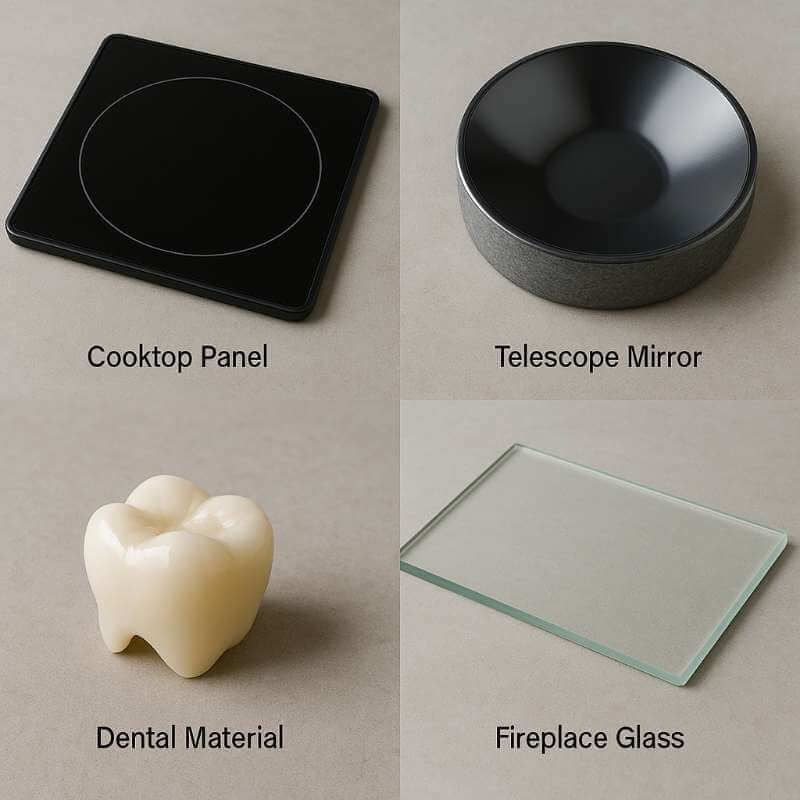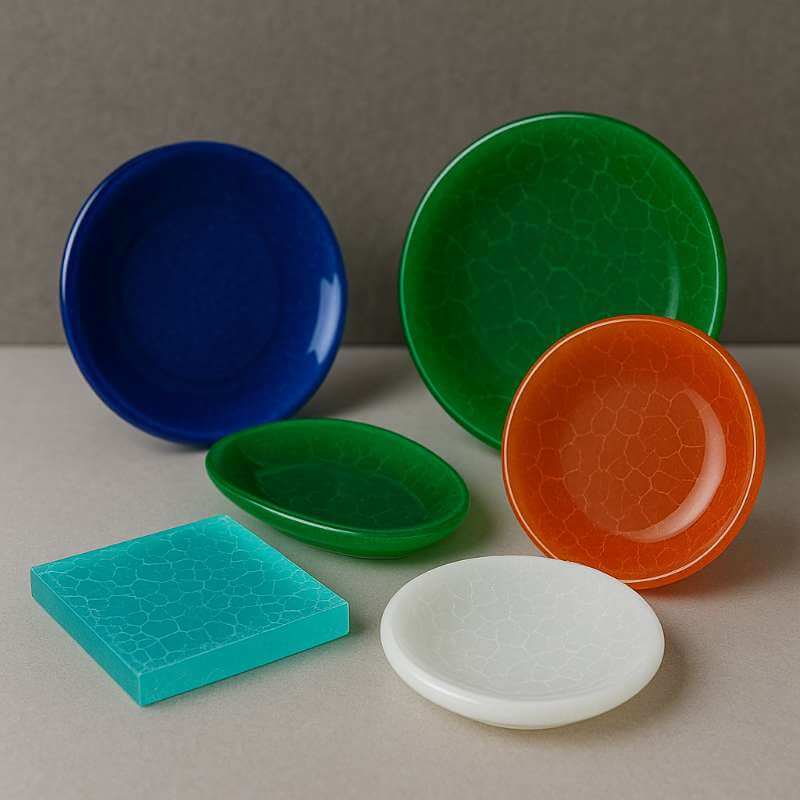In the fast-paced world of materials science, making informed choices is crucial for manufacturers and decision-makers. If you are seeking ways to enhance your glass ceramics, you may find yourself grappling with various options. This versatile material provides compelling solutions, stepping in as an option that not only elevates the properties of glass but also enhances aesthetic qualities. With its proven track record across industries such as construction, automotive, and ceramics, zirconium silicate has become the go-to choice for many professionals. This article will provide invaluable insights into how this material is transforming modern glass ceramics, empowering you to make informed decisions in your business.
Understanding the implications of choosing the right materials can set your products apart. Achieving the perfect blend of strength, aesthetics, and sustainability can make your offerings not only competitive but also appealing to environmentally conscious consumers who prioritize durability in their purchases.

Modern ceramic products highlight the aesthetic and functional benefits of zirconium silicate.
How Does Zirconium Silicate Affect Glass Properties?
Zirconium silicate plays a critical role in several essential attributes that define glass properties crucial for end-use applications. One significant enhancement is the improved durability of the glass. Traditional glass can be prone to scratches and breaks, especially under thermal stress due to environmental changes. With the addition of zirconium silicate, glasses become tougher and better equipped to handle both physical and thermal shocks, which enhances their longevity in various applications.
Moreover, thermal resistance is another vital attribute. This capability permits ceramics to withstand high temperatures without deforming or weakening. As industries push for materials that can endure extreme conditions, this material stands out due to its ability to maintain structural integrity. High-temperature applications are prevalent in sectors ranging from aerospace to manufacturing, where the expectations for materials are high.
What else can this remarkable compound do? It also influences thermal expansion behavior. This property ensures that glass ceramics experience minimal change in dimensions when exposed to temperature fluctuations, which is particularly important in delicate applications such as lab glassware and cookware. The stability provided by zirconium silicate translates into safer and more reliable products.
In recent years, advancements in composites have demonstrated the synergy between zirconium compounds and various types of glass. This combination not only maximizes strength but also maintains clarity, presenting a perfect blend of durability and aesthetics. Moreover, formulations can be tailored to specific applications, providing manufacturers with flexibility and a competitive edge.
In sum, incorporating this versatile component enhances the fundamental characteristics of glass, making it a valuable asset for industries looking to produce high-quality ceramics that meet the demands of modern usage.

This image showcases diverse glass ceramics used in different applications, highlighting their unique attributes.
What Are the Applications of Zirconium Silicate in Ceramics?
The versatility of zirconium silicate is evident across its diverse applications in several sectors, with each benefiting uniquely from its properties.
- Tile Production: One of the most common uses is in the creation of durable, scratch-resistant tiles. These tiles not only maintain aesthetic appeal but can also withstand heavy foot traffic, making them ideal for both residential and commercial spaces. Tiles infused with this material can also resist staining and moisture, extending their lifespan and reducing maintenance costs.
- Cookware: In the cookware industry, this material allows for the development of pots and pans that are not only heat-resistant but also aesthetically pleasing. The ceramics created with zirconium silicate can endure daily use without chipping or cracking, delivering reliable performance. Consumers benefit from knowing that their cookware can handle high temperatures while remaining safe and durable in their kitchens.
- Dental Ceramics: In the dental sector, zirconium silicate is crucial in creating crowns, bridges, and implants. Its natural translucence closely matches that of human teeth, providing aesthetic benefits. Beyond appearance, it offers high mechanical strength and biocompatibility, which are essential for ensuring that dental solutions can withstand the rigors of everyday use while also being safe for patients.
The applications of this compound in ceramics extend beyond these examples, covering more ground in various fields, particularly in electronics where the need for high-performance materials is ever-increasing.
These applications showcase the unparalleled versatility of zirconium-based compounds, solidifying their place within several industry sectors. Industries ranging from construction to healthcare can reap the benefits of using this advanced material.
| Application | Description | Key Benefits |
|---|---|---|
| Tile Production | Durable, scratch-resistant tiles | Aesthetic appeal, longevity, low maintenance |
| Cookware | Heat-resistant ceramic cookware | Durability, usability, aesthetic appeal |
| Dental Ceramics | Aesthetic crowns and bridges | Biocompatibility, translucence, strength |
How Is Zirconium Silicate Incorporated into Glass Ceramics?
The incorporation of zirconium silicate into glass ceramics involves established methodologies that enhance material properties and overall performance.
The first step in the process typically involves selecting appropriate mixing ratios. The amount of this compound integrated will directly influence the final characteristics of the ceramic. Each formulation may differ based on the desired application, ensuring that functionality aligns with market needs and consumer expectations.
Secondly, careful melting and processing techniques are crucial. Manufacturers often utilize precise melting temperatures and durations to optimize the bonding of materials, thus impacting overall strength and durability. The integration of zirconium silicate requires thorough testing and validation experimental protocols, ensuring that the resulting ceramic meets rigorous industry standards for quality.
In recent advances, innovative blending techniques are surfacing, allowing manufacturers to explore new possibilities in material science. These methods improve homogeneity in the glass matrix, leading to enhanced performance and the potential to create customized products that can fulfill niche market requirements.
Furthermore, proprietary processes unique to specific manufacturers can lead to dramatic improvements in efficiency and quality. Continuous research and development are essential to stay ahead in the competitive landscape, where innovation is the key to attracting and retaining clients.
Ultimately, the effective incorporation of this compound sets the stage for producing high-quality glass ceramics that meet or exceed consumer expectations, thus fostering brand loyalty and establishing market leadership.
Why Is Zirconium Silicate Preferred Over Other Materials?
The choice of zirconium silicate often emerges from its notable advantages compared to other alternatives in various applications.
When compared to alumina or silica, this material provides superior thermal stability, which makes it a favored option in high-performance environments. For example, in industrial settings where high temperatures are common, having materials that can withstand thermal stress is essential to maintaining productivity and safety.
Another reason for its popularity lies in cost-effectiveness. While some materials, such as alumina, may offer specific advantages, the balance between performance and operational costs makes zirconium silicate an attractive choice. Manufacturers often experience less waste during production, thanks to its robust nature, thereby lowering overall costs, which can be passed on to consumers as well.
It gets better. The lightweight properties of zirconium compounds facilitate easier handling and more efficient transportation, providing a further advantage in logistics, a critical factor in today’s global economy.
Additionally, its environmental impact is a growing concern. As companies strive to implement sustainable practices, using a naturally occurring mineral aligns with their goals and appeals to eco-conscious consumers.
| Material | Advantages | Drawbacks |
|---|---|---|
| Zirconium Silicate | Thermal stability, cost-effectiveness | Limited high-temperature applications |
| Alumina | High hardness, wear resistance | Heavy and more expensive |
| Silica | Abundant and inexpensive | Lower thermal resistance |
How Does Zirconium Silicate Enhance Aesthetic Qualities?
Beyond functional advantages, zirconium silicate significantly impacts the aesthetic qualities of glass ceramics, an aspect that can greatly influence a consumer’s purchasing decision.
In many cases, clarity and color accuracy are essential for products on the market, as consumers often seek items that are not only functional but also visually appealing. Ceramic materials infused with this compound can achieve a level of transparency that approaches that of high-quality glass, allowing for creative design choices and decorative finishes.
Moreover, the color properties are enhanced, allowing for improved consistency in pigmentation. Zirconium silicate facilitates the uniform distribution of pigments, leading to vibrant hues without compromising the material’s integrity or altering its physical properties. This capability opens up new avenues for design and product differentiation in a competitive marketplace.
An added benefit is the improvement in surface finishes. Items made from zirconium-based compounds exhibit smoother, polished surfaces that cater to modern consumer desires for luxury finishes. This is especially relevant in industries such as interior design and automotive, where appearance plays a critical role in consumer choices.
Thus, zirconium silicate does not merely enhance performance; it elevates the product’s overall marketability, creating opportunities for brands to engage consumers effectively.

This image depicts a range of visually appealing glass ceramics that showcase vibrant colors and polished surfaces.
What Challenges Exist with Using Zirconium Silicate?
While zirconium silicate offers remarkable benefits, it also presents challenges that manufacturers should address to maximize its potential.
Common processing difficulties can arise when integrating this compound into specific formulations. Variability in raw materials, due to supply chain issues or quality inconsistencies, may affect the homogeneity required for high-grade products, resulting in variations in the final output. To combat this, manufacturers may need to invest in quality control processes to continuously monitor and adjust their materials.
Another notable issue is material sourcing. With increasing demand across industries, securing high-quality zirconium silicate may become more competitive, causing fluctuations in availability and pricing, which can impact production schedules. Companies must build strong relationships with their suppliers to mitigate these risks and ensure stable access to the materials they need.
Additionally, health and safety concerns surrounding zirconium compounds warrant close attention. As public awareness of environmental and safety issues grows, manufacturers must ensure that they meet or exceed all regulations. Proactively addressing these concerns can enhance brand reputation and consumer trust.
Despite these challenges, businesses that adapt effectively can still reap the rewards of using zirconium silicate, leveraging its benefits while implementing strategies to navigate the complexities of its use.
How Is the Market for Zirconium Silicate Evolving?
The market landscape for zirconium silicate is currently dynamic, with several trends shaping its future.
Recent years have seen rising demand for high-performance materials across various industries. As markets such as construction, electronics, and healthcare continue to grow, so does the need for innovative materials like zirconium silicate. The increasing complexity of products and applications drives the search for stronger, more reliable materials.
Emerging trends also suggest a shift towards sustainability. Manufacturers are adapting by incorporating eco-friendly practices into zirconium silicate processing. This shift allows companies to align with environmental regulations while appealing to a conscientious consumer base that favors sustainable products. Sustainability can no longer be an afterthought; it’s critical for brand image and competitiveness.
Interesting developments in research and technology promise innovative applications for zirconium silicate. Ongoing research is expanding its use in advanced technology sectors, and these advances may introduce new markets, further enhancing its presence. For example, breakthroughs in nanotechnology and electronics could utilize zirconium silicate in novel ways, extending its versatility across entirely new sectors.
| Market Trend | Impact on Zirconium Silicate | Future Outlook |
|---|---|---|
| Rising demand | Increased production | Strong growth potential |
| Sustainable practices | Enhancing regulatory compliance | Broader market expansion |
| Technological innovations | Opening new applications | Increased versatility |
How Can Businesses Benefit from Zirconium Silicate?
Integrating zirconium silicate into manufacturing processes offers a wealth of advantages for businesses, especially as they navigate the complexities of modern marketplaces.
One significant benefit is cost savings—a priority for manufacturers facing competitive pressures. By improving material durability, companies can reduce waste and minimize returns due to product damage or failure. This efficiency leads to lower overall production costs and can result in higher profits, which is a compelling incentive to adopt this advanced material.
In addition to cost benefits, zirconium silicate contributes to product quality improvement. The enhanced properties, such as thermal stability and aesthetics, elevate the quality perceived by consumers. In competitive markets, this differentiation can translate to higher sales volumes and brand loyalty, as consumers are more likely to choose products that are both reliable and visually appealing.
Moreover, utilizing zirconium silicate provides a competitive advantage. As industries seek innovative solutions, businesses that adopt these materials can position themselves as leaders in manufacturing practices. Being at the forefront of material technology not only builds credibility but can also attract new clients and partnerships.
| Benefit | Description |
|---|---|
| Cost savings | Reduced waste and lower production costs |
| Product quality improvement | Enhanced durability and aesthetic appeal |
| Competitive advantage | Leadership in sourcing innovative materials |
What Innovations Are on the Horizon for Zirconium Silicate?
The future of zirconium silicate appears promising, with emerging innovations likely to shape its trajectory. Continuous research and development are fostering a wave of new ideas that could revolutionize its applications.
Research is focusing on enhancing sustainability in zirconium silicate production. Emerging processes aim to reduce environmental footprints, promoting energy efficiency and minimizing waste, which are crucial as industries grapple with increasing regulatory pressures and consumer demands for greener practices.
Innovative applications are also on the rise. Areas such as electronics, coatings, and advanced materials are beginning to explore the use of this compound for conductive pathways, nanocomposites, or specialty glass. These innovations could substantially expand market reach and create partnerships across sectors.
Overall, the ongoing research into the properties and applications of this content promises exciting developments in the coming years. Operators in material science will need to stay informed about these advances to remain competitive.
How Does Zirconium Silicate Impact Sustainability Efforts?
Sustainability is becoming a pressing concern across industries, and zirconium silicate contributes positively to these efforts while aligning with regulatory and consumer demands.
One notable trait of zirconium compounds is their eco-friendly profile. Being a naturally occurring mineral, it has a lower environmental impact compared to synthetic alternatives. Choosing this material can help manufacturers reduce their carbon footprint while simultaneously meeting the needs of environmentally conscious consumers.
When employed in production, firms can reduce their reliance on harmful additives, promoting safer outcomes for products that comply with safety regulations. This not only mitigates risk but also responds to consumer expectations for transparency in how products are made.
Additionally, practices surrounding the processing of zirconium silicate are evolving. Modern operational strategies focus on minimizing waste and implementing energy-efficient practices, which align well with sustainability goals. Businesses that prioritize these strategies can enhance their brand reputation and establish themselves as leaders in eco-friendly manufacturing.
In summary, the use of zirconium silicate not only enhances the performance of materials but also supports the industry’s move towards more sustainable practices, creating a robust foundation for future growth and development.
Conclusion
In conclusion, zirconium silicate is a transformative material that reshapes the landscape of glass ceramics. Its benefits include improved properties, enhanced aesthetics, and sustainability practices that resonate with businesses across multiple sectors. By integrating this versatile compound, companies can achieve significant advantages, including cost savings and superior product quality. Global Industry invites you to connect and explore how this material can enhance your manufacturing processes. For further insights and tailored guidance, visit our resources or reach out for personalized support.
FAQ Section
Q1: What is zirconium silicate used for in glass ceramics? Zirconium silicate enhances durability, thermal resistance, and aesthetic qualities in glass ceramics, making it suitable for a wide range of applications.
Q2: How does zirconium silicate enhance glass strength? It reinforces the glass matrix, resulting in superior mechanical resilience and improved thermal properties that meet industry demands.
Q3: Are there any drawbacks to using zirconium silicate? While it offers many benefits, challenges include processing complexities and sourcing high-quality materials, which can impact manufacturing.
Q4: What future trends are expected in the zirconium silicate market? The market is likely to see increased demand for sustainable practices and innovative applications, catering to evolving industry needs.
Q5: Why is zirconium silicate preferred over traditional materials? It provides excellent thermal stability, lightweight benefits, and enhanced product quality, making it a preferred choice for modern manufacturing.
